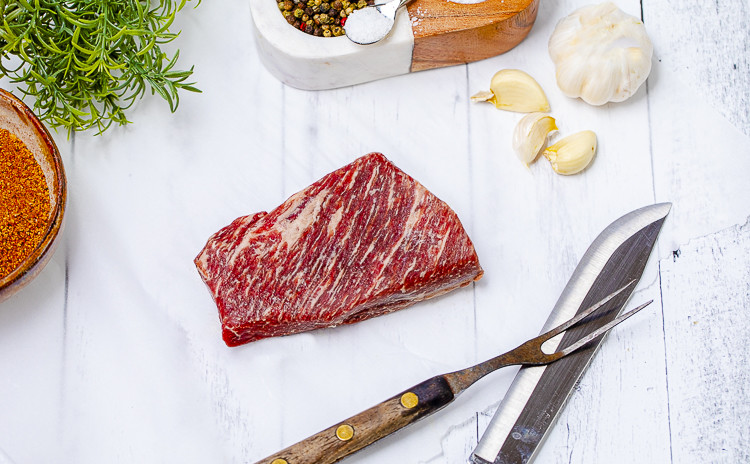Wagyu Cooking Tips
posted on
January 2, 2019
Always cook Wagyu from a cold state.
The fat in Wagyu Beef melts at a lower temperature than commercial beef due to the higher levels of unsaturated fat, primarily consisting of oleic acid. Ideally, you’d cook any Wagyu product straight out of fridge to avoid overcooking or drying out.
Flip Steaks over as few times as possible- especially if grilling.
The act of flipping steaks causes all the juicy goodness to escape! Limit flipping to just once if at all possible. A good method for this is to cook steaks on the flip side for half the amount of time you cooked the first side. The first side will be cold when it touches the cooking surface, the flipped side will be much warmer when it touches the cooking surface so it will take less time to cook through.
Higher heat is best to seal in the natural flavor of Wagyu beef.
In order to trap the juices inside of your steak, it’s best to sear at high heat to form a “crust” that holds the juices in. If you enjoy your steak on the well done or medium well side, avoid burning by increasing heat slightly from where you normally cook them. This will avoid drying out.

Always use an internal thermometer or instant read thermometer to check temperature and follow instructions on manufacturers label. For steaks always remove 5 degrees before temperature is reached and for roasts or thicker steaks 10 degrees before to allow for carryover cooking. A good rule of thumb is to allow steaks to rest for 1/3 of the time it took you to cook it to allow juices to settle.
If you follow these simple rules, the flavor in the steak should speak for itself. Please find us on any of our social media platforms through our website and let us know how the meat turns out for you!




